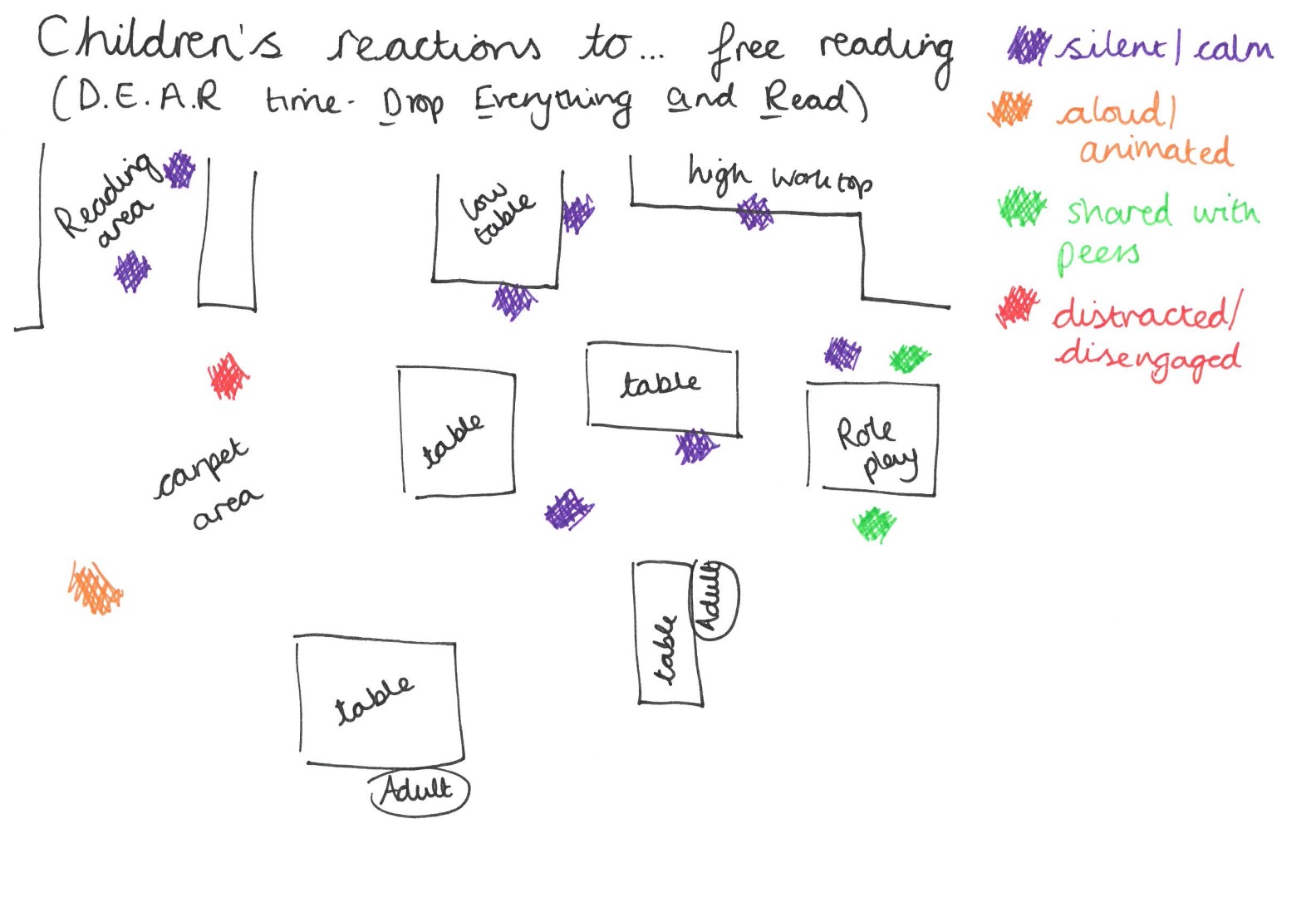PLACES
Children's reactions to free reading
"That's the high table because some of them choose to stand as well which is interesting, and I've got a load here where they kneel so I've got different heights in the classroom … The two that sat in the book corner I thought, hmm, we're going to have a bit of, you know, we're not actually going to – I thought they were going to be disengaged but actually they did, they'd obviously chose [books] they enjoyed..."
Children's reactions when reading free choice in the library
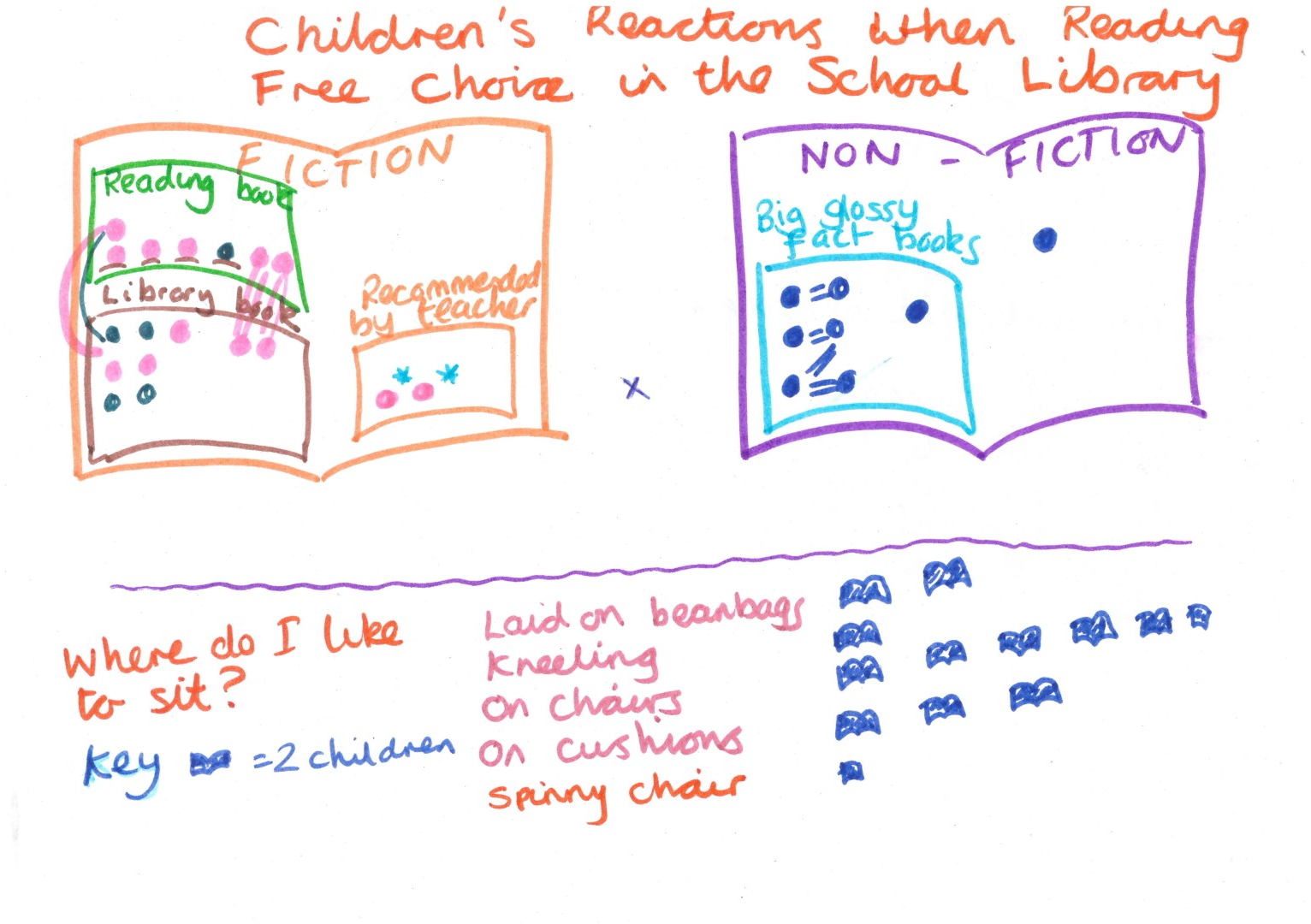
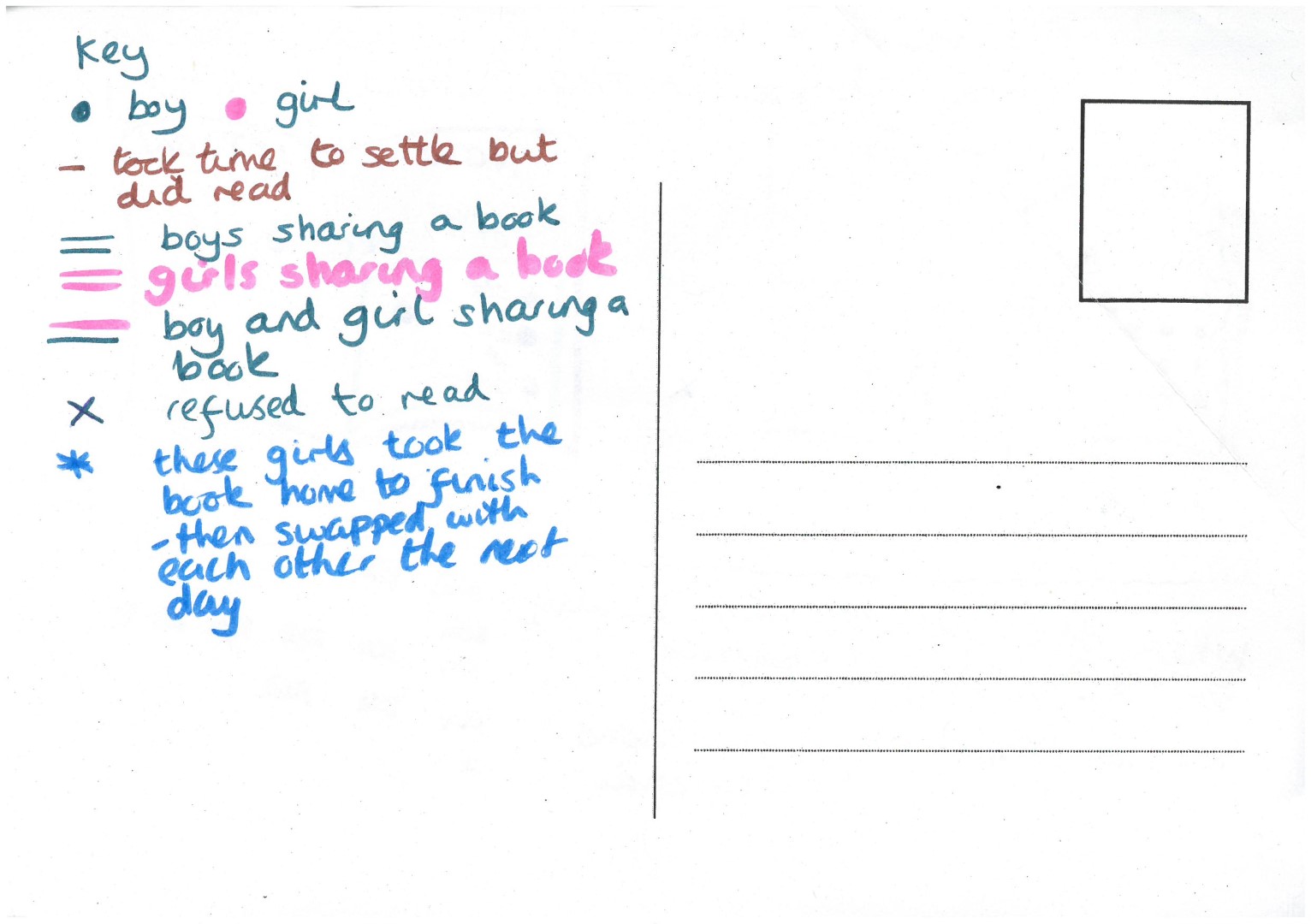
“I also just charted down as well where they like to sit. It was laying on the beanbags, kneeling, I can't imagine a more uncomfortable way to read, I wouldn't dream of kneeling on the floor but two children did, on chairs, on cushions, and then on the spinny chair as well. I noticed in week two same girl on the spinny chair so I'll have to see where she is in the queue and see if the other children go past it and she's at the back of the queue or is she getting to the front? I don't know. It would be interesting to see. …”
Where do we go when creating poetry?
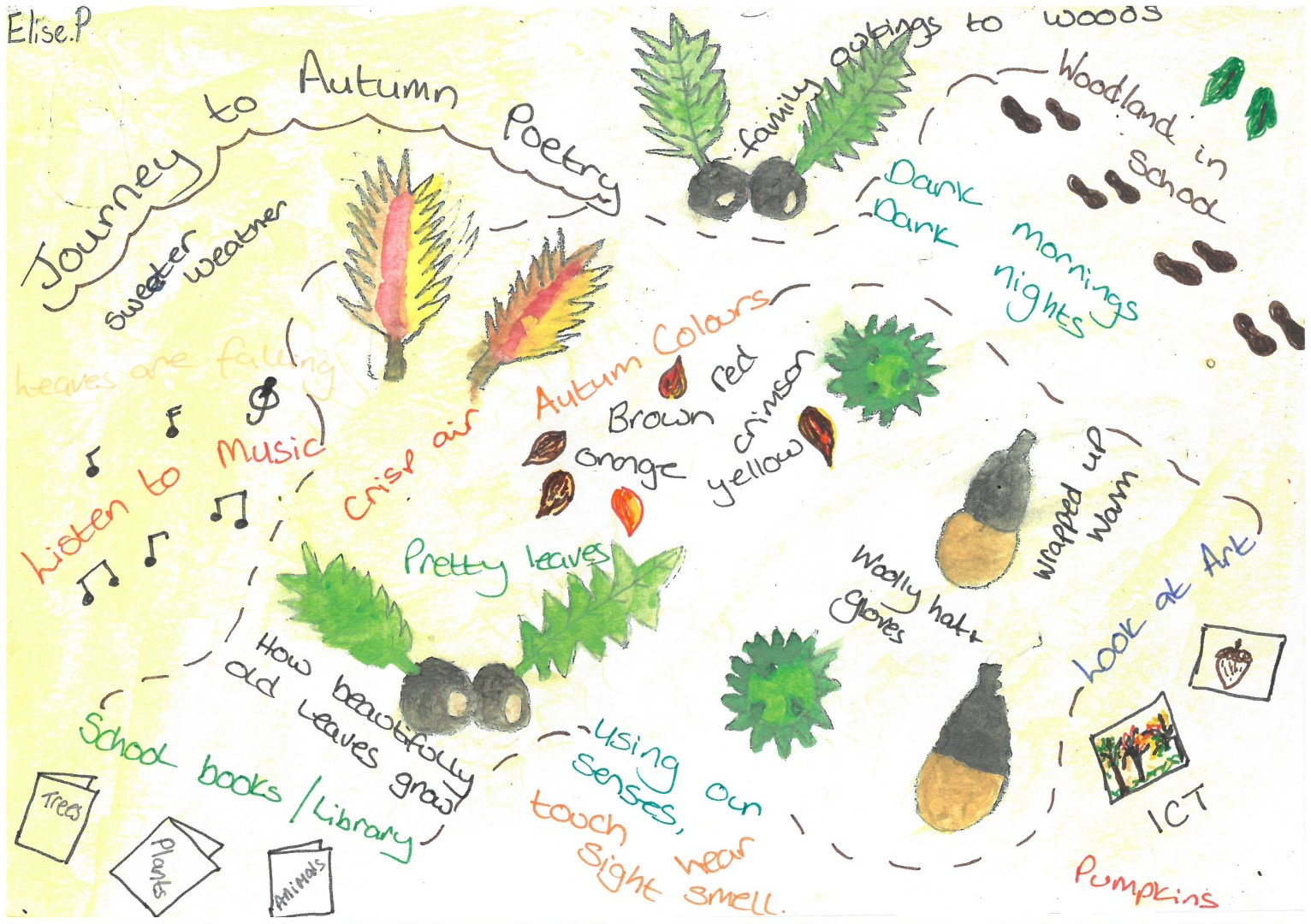
“Well I did 'journey to autumn poetry.' It's the same information, just represented differently and it was how we got to the final destination of a poem and physically where we went and maybe technologically where we went. So we went to the woodland in school, concentrated on the senses, touching, hearing, what you can see, what you can smell. […] Really for something like autumnal poetry to leave the classroom is important. We could have done it by not getting out of our seats but to leave and also to use the resources such as the books but also the internet and listening to music, it all contributed to their senses of what autumn is and I think adding the science to it was also a different slant. Some of them introduced that in to their poetry, some of the scientific terms.”
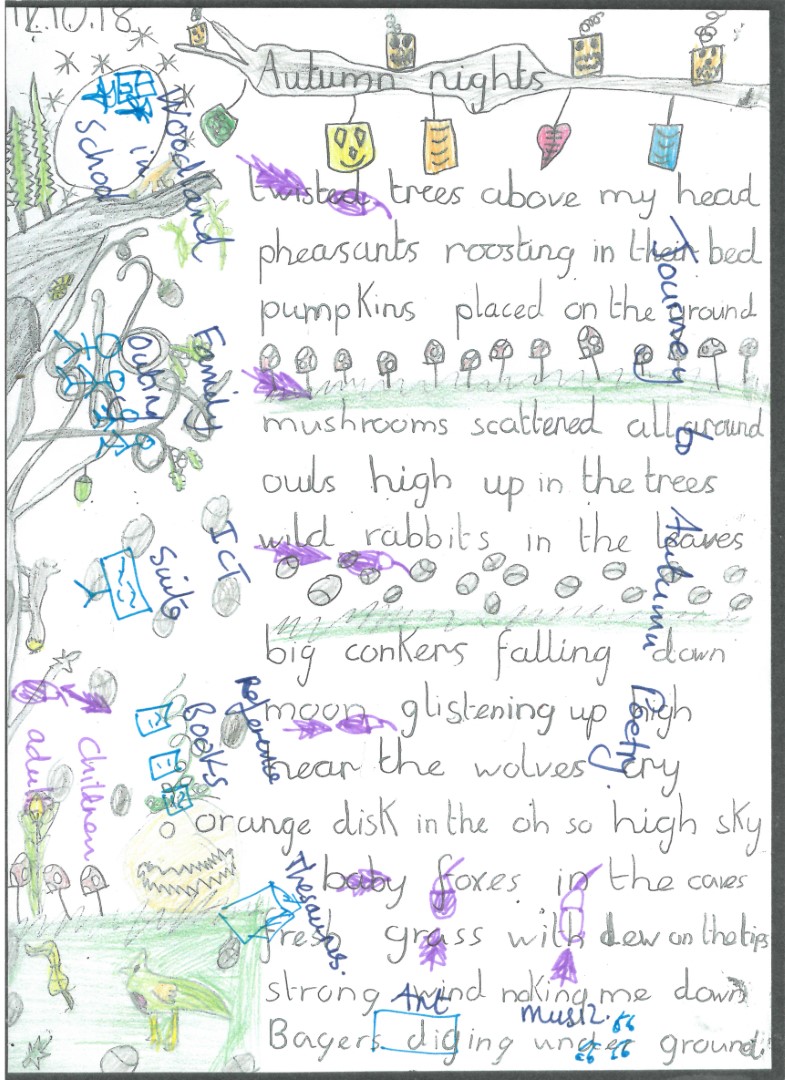
Where children go to for English support?
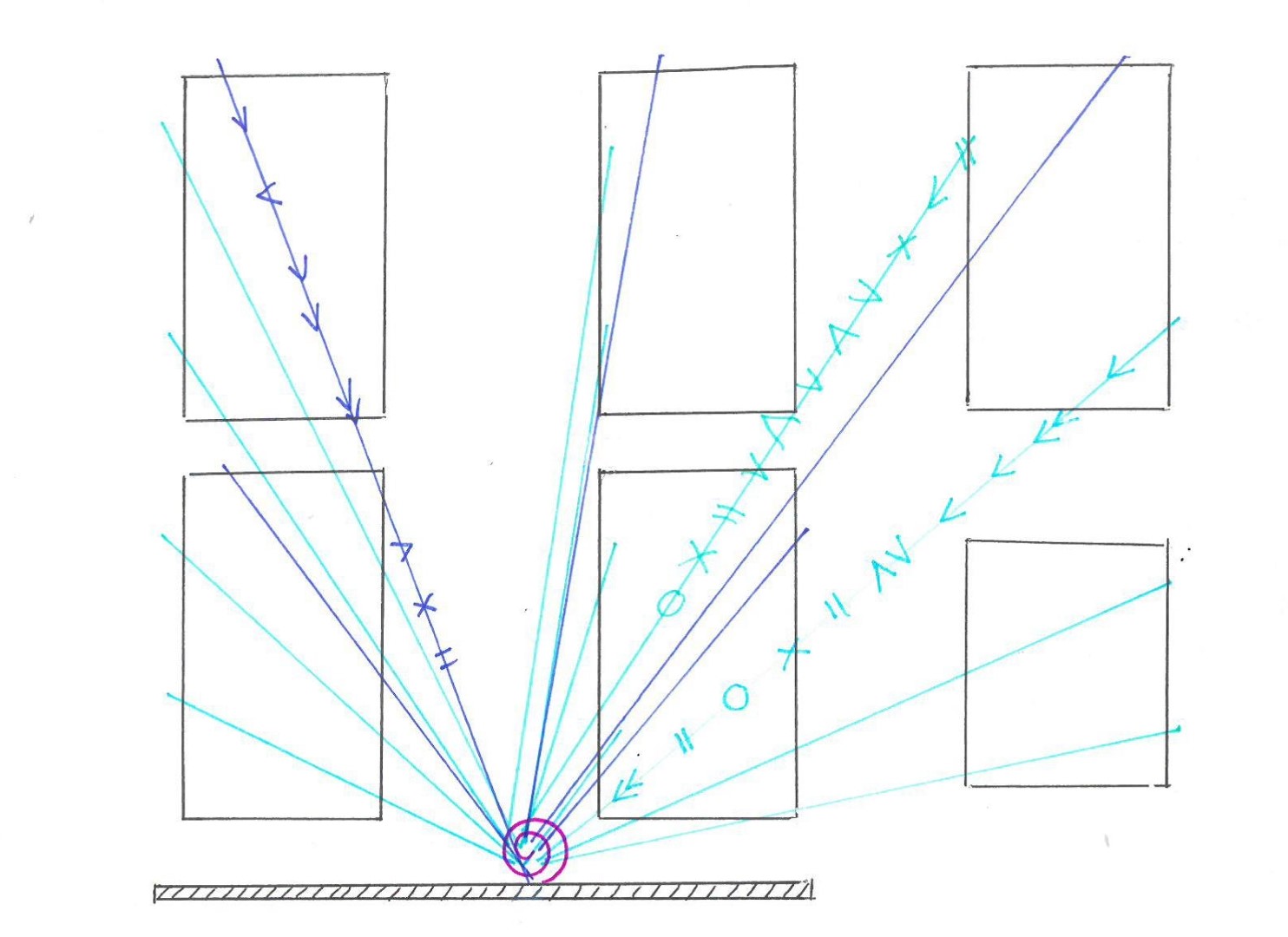
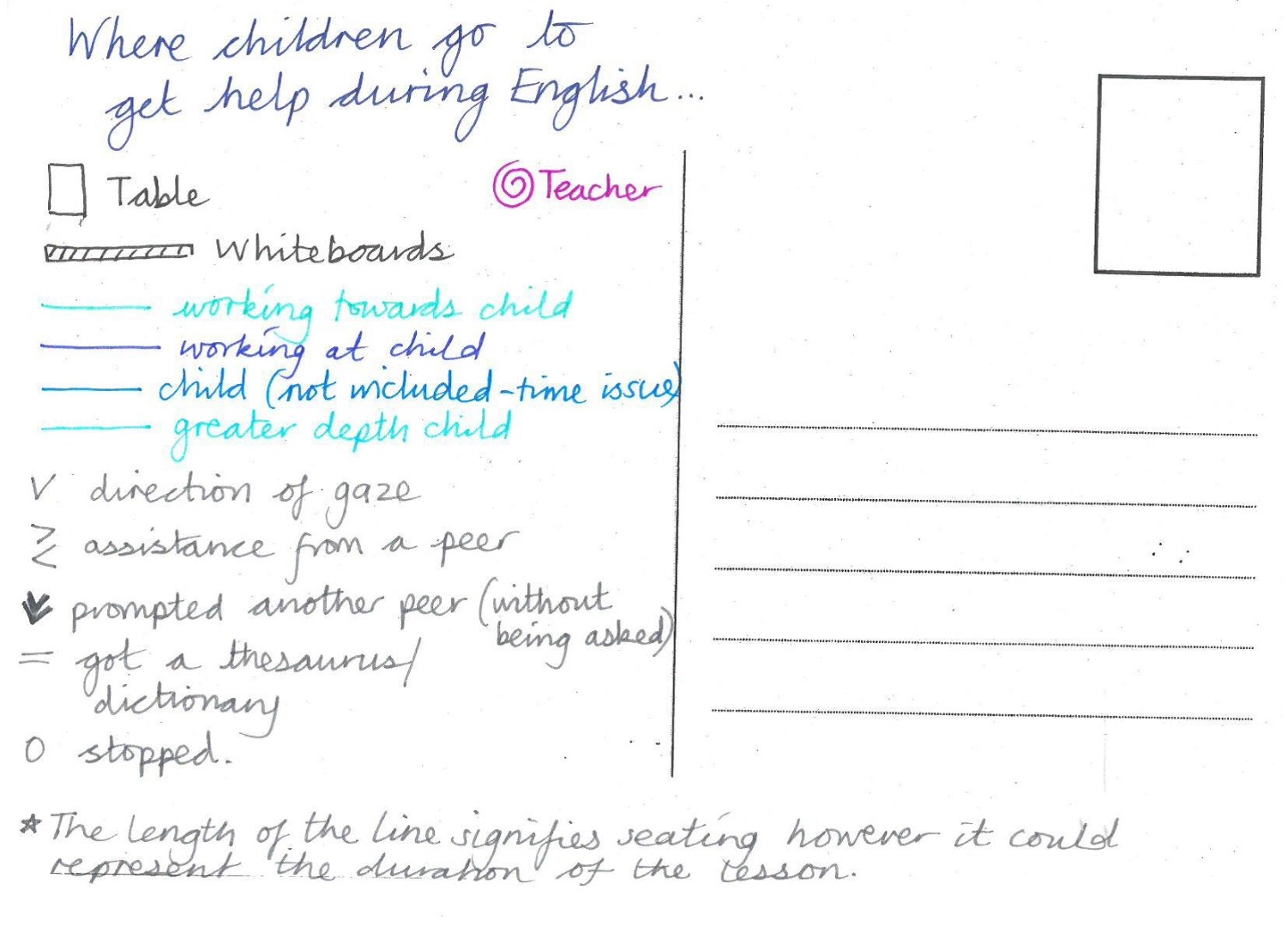
‘The things at the front they did naturally look towards but, again, that's more to do with how my room's set up, I think, because I always try and make it so that everybody's seat faces forward without having to twist unnaturally but obviously that means that if they do want to look at that then they've got to twist unnaturally to turn round and look at the back. More awareness of classroom set up I think.’
‘It makes you think who's designing the classroom space as well because, like you say, my working walls are opposite where the children face to do their learning. […] but then at what point does that become wallpaper? How often do you change it to make it meaningful?’
